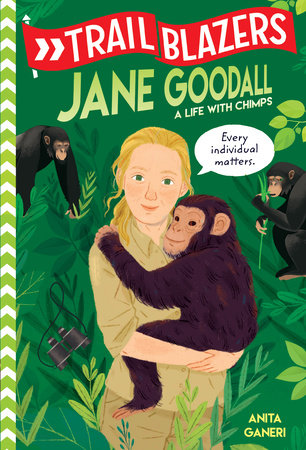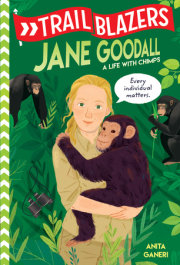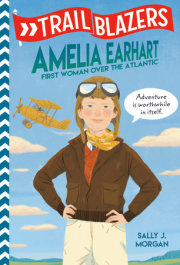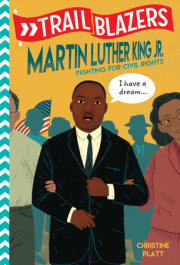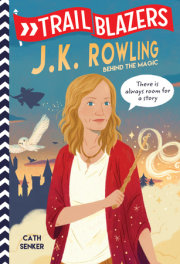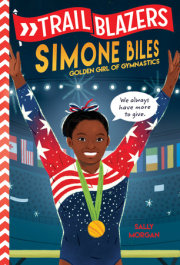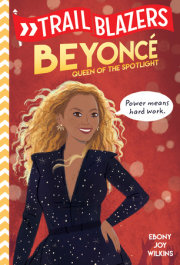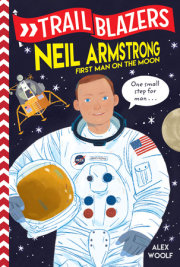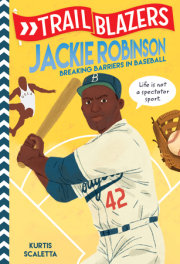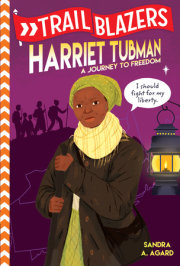One November morning in 1960, a young Jane Goodall trudged wearily up a steep hill in Gombe Stream Game Reserve (now known as Gombe Stream National Park), Tanzania. She had been out and about since dawn, looking for chimpanzees in the thick forest that covered the mountain slopes. Frustratingly, she hadn’t seen any signs of them so far, and it was almost midday. Suddenly, she heard rustling in the long grass ahead and spied a large, dark shape. Quickly adjusting her binoculars, she recognized a handsome male chimp she had seen many times before. He was sitting next to a tall, brick-red termite mound, poking a long stalk of grass in and out of a hole. Each time he pulled the stalk out, he picked something off it with his lips.
It looked as if the chimpanzee was using the grass as a tool to “fish” for termites to eat! Jane knew that she was witnessing something amazing. No one had ever seen this behavior before. No one even knew that chimpanzees used tools—until then, scientists thought only humans did that. The enormity of her discovery took a while to sink in. But what she saw that day in Gombe not only changed her life forever but also changed the course of animal science.
A Man’s World
So, what had brought Jane Goodall to the African jungle in the first place? As a little girl, her favorite toy was a stuffed chimpanzee called Jubilee. This cuddly companion, together with her love of animal stories, awakened Jane’s interest in wild and faraway places. As she grew older, she began to dream of living and working among animals in Africa. But, at that time, the field of scientific research and exploration was very much a man’s world. As Jane later said, “When I was a little girl, I used to dream as a man, because I wanted to do things that women didn’t do back then, such as traveling to Africa, living with wild animals, and writing books.”
Jane and her friends were expected not to follow such an adventurous career but to get married and run a home instead. She was even presented to the queen at Buckingham Palace as a debutante. She went to dances and balls, where many of the girls were hoping to meet a husband. Later, Jane remembered being surrounded by girls who asked her if she dreamed of living at the palace and attending on the queen. The other girls were appalled at Jane’s answer: “Absolutely not—I want to live among wild animals!”
Even when Jane was carrying out her research in Africa, she struggled to be taken seriously, because she was viewed as an unqualified young woman. When her findings made it into the newspapers, the headlines focused on her looks rather than her work. Jane’s discoveries were also severely undermined by academics, who were usually men. Jane hadn’t been to college, they reminded each other, so what did she know about making accurate observations or keeping detailed notes?
Many academics also criticized her research methods while she was out in the field. When Jane began work at Gombe, there had only been one short study of chimpanzees in the wild. Very little was known about them. Jane took a new, creative approach to her work. Rather than watching the chimpanzees from afar in a cold, clinical way, she spent hours among them, getting to know their habitat, personalities, emotions, and lives. To form a closer bond, Jane gave the chimpanzees names instead of numbers, going against the thinking of the day. Many scientists were horrified. They disapproved of giving animals humanlike qualities, but Jane was determined that each chimpanzee should be recognized as a distinct being. Her way of working brought great rewards. She was able to find out things about chimpanzees that we would never have known otherwise.
Jane came from a family of strong women and had the full support of her mother and grandmothers. In fact, Jane thought that being a woman helped her in some ways. She was able to form good relations with the local people in Gombe. At that time, many African countries were gaining their independence after years of colonialization by Western European powers. After years of fighting, local people were still very wary of European men, but they didn’t see Jane as a threat, and they went out of their way to help her.
When Jane first started studying chimpanzees, primatology was a relatively new area of a study, with just a handful of scientists working in the field.
Jane’s groundbreaking discoveries at Gombe caused a sensation in the scientific world. Until that day in November 1960, scientists had believed that humans were the only living creatures that could make and use tools. It was what set humans apart from other animals, they’d thought. Jane’s work was to revolutionize primatology and prove the close links between people and chimpanzees, challenging the uniqueness of human beings. It took some time for scientists to accept her findings, but since then they have gone on to discover that other animals, including crows, elephants, sea otters, and orangutans, also make and use tools to solve problems and find food.
For Jane, at twenty-six years old, this discovery marked the beginning of a lifetime’s work. She was to spend the next forty or so years observing chimpanzees and championing their cause. But all of that was still to come. As she sat on the hillside in Gombe watching a chimpanzee fish for food, she was unaware of the extraordinary impact that her discoveries were about to make on science, and the world.
Copyright © 2019 by Anita Ganeri. All rights reserved. No part of this excerpt may be reproduced or reprinted without permission in writing from the publisher.

